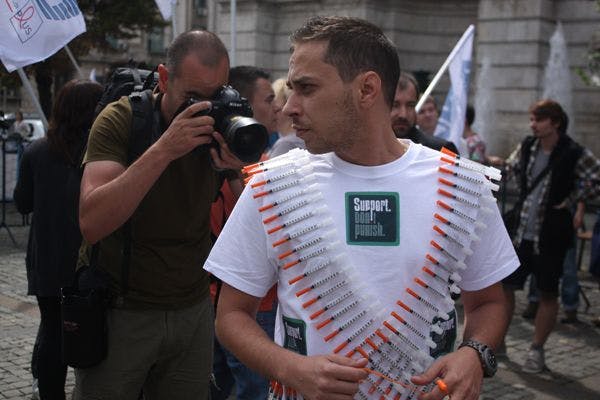Why the Global Fund has it wrong on ‘Willingness to Pay’
Earlier this year, the Global Fund to Fight AIDS, Tuberculosis and Malaria launched a New Funding Model (NFM) – a shift away from annual funding ‘rounds’ where countries submitted proposals that were judged in competition with one another. Instead, countries are now allocated a funding ‘envelope’ based on their income level (according to World Bank data) and national disease burden. The NFM aims to be simpler and to provide more predictable funding – but it continues to pose more questions than it answers, especially for civil society and key populations.
From the onset, concerns were raised about the possible impact of the Fund’s use of World Bank data on interventions like harm reduction for people who inject drugs (who are mostly in middle income countries). Others worried that an emphasis on treatment would mean less support for prevention and so-called “critical enablers” such as advocacy and community mobilisation.
Unfortunately, many of these concerns are now being realised. According to a recent report from Harm Reduction International (HRI), the International Drug Policy Consortium (IDPC) and the International HIV/AIDS Alliance, we are facing a global funding crisis for harm reduction. Measures such as country income and national disease burden are simply too blunt to properly account for the need in countries with HIV epidemics that are concentrated among people who inject drugs. Based on these criteria, nearly half of the 58 countries that have previously received harm reduction funding from the Global Fund are now ineligible for support or have not been assigned any new HIV money for 2014 – 2017. The assumption is that middle income governments are able to pay for their own HIV responses – yet we know from bitter experience that governments rarely do so, especially for marginalised and criminalised populations such as people who inject drugs. These governments may be theoretically able to pay, but they are not willing to.
These worries were raised when the NFM was being developed. In response, the Fund’s Board decided in 2012 (Board Decision B28/DP4) that that “willingness to pay” would be taken into consideration as a “qualitative factor” to adjust the amount assigned to a country and “account for the specific circumstances in each country the allocation formula might not capture”. This sounded like a welcome flexibility – a way to ensure continued funding for NGO recipients from middle income countries who are delivering harm reduction services despite their government’s refusal to provide funding themselves.
But as the NFM evolved throughout 2013 and early 2014, “willingness to pay” has become something else entirely. Instead of being a way to adjust allocations upward to reflect government failure to invest in harm reduction, it has become a punitive condition applied to further reduce Global Fund support. Grant recipients must now fulfil a complex list of conditions or they will lose 15 percent of their allocation. Rather than supporting programmes that middle income governments continue to overlook, this approach will further jeopardise their existence.
According to the Global Fund’s latest progress report, upper middle income countries that account for 18 percent of the global disease burden are only receiving $1.2 billion, or 8 percent, of the funding (see graph).
There is an urgent need for the Global Fund to look again at its new model and ensure that key populations and harm reduction programmes are not disadvantaged. Without changing the NFM itself, the Global Fund can and must implement measures to protect their status as the leading international donor for harm reduction. Where middle income governments have shown limited “willingness to pay” for lifesaving harm reduction interventions (as is unfortunately the case across much of Eastern Europe and Asia), NGOs and other recipients should be able to access additional resources to fill the funding gaps and address key populations. This would help to ensure that vulnerable but effective harm reduction programmes can continue – delivering lifesaving services alongside ongoing advocacy to increase domestic support and funding in the longer-term.
Regions
Related Profiles
- International Drug Policy Consortium (IDPC)
